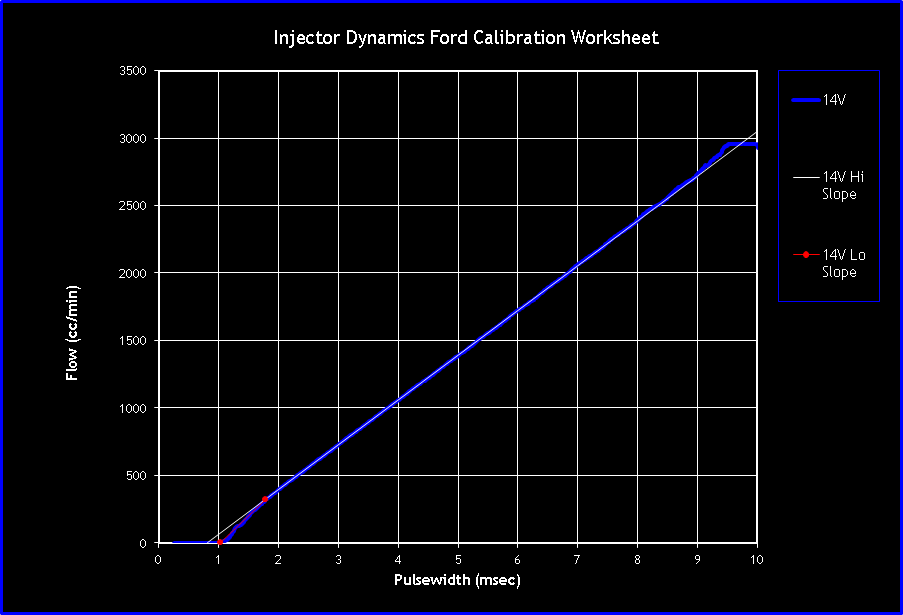The purpose of this thread is to document the tuning process I am currently going through. Although I am far from an expert, I thought that it would be helpful for those that may have interest in self-tuning. This first post will focus on the background, and I will add posts covering what I have learned and what I have been trying out.
A few years ago I put a fuel injected 393W into my 1973 Bronco. At the time, I put together a very simple tune using the moates quarterhorse system, and Binary Editor software. Surprisingly, by just changing a few things to match the modifications I made, I was able to create a tune that worked pretty well - easy starting, semi-stable idle, and no pinging/pre-detonation or other fueling/timing issues.
All was fine until a few weeks back that I was talking to Lars and I decided that it was time to invest some more time into the tune since I know that it is far from optimized. The main focuses that I have are to smooth out the idle, fix the lag that is present from idle to about 1800 rpm, and adjust fueling since it is rich to be on the safe side. My EFI 5.0L ran extremely well, so I have high expectations from the 393W and it just isn't there yet.
Here is the current set-up of the engine/trans:
- 351W stroked to 393W
- Windsor Sr (Roush) heads by World Products (200CC; 2.02/1.60 valves; cast iron)
- 9.0:1 compression ratio
- Explorer Serpentine
- Lightning GT40 lower intake; Explorer GT40 upper intake
- MSD TFI distributor
- Lightning 90mm MAF sensor
- 75mm Summit throttle body; some massaging to the upper intake to blend the two together
- 30lb Ford Fuel injectors
- stock style fuel pressure regulator (39psi)
- LC-1 Wideband O2 Sensor and Gauge
- 1 1/2" primary shorty headers
- Dual 2 1/4" exhaust
- 4r70w transmission
I have spent countless hours reading about tuning the ford system, and these by far seem to be the best sites...
The 'write ups' section of this site is awesome. I give a major shout out to the guy who runs this site: 'Decipha'.
http://www.efidynotuning.com/
http://forum.efidynotuning.com/
This is a message board with a lot of great info if you search, but it can be difficult to get tech feedback from the 'gurus'. They don't seem to be too interested in Broncos... Most people use Moates and BE. They seem to point people in the right direction, but wont hold your hand. So you have to be willing to read and reread everything, compared to this site where a lot of people are very attentive to the newbie.
http://www.efidynotuning.com/
Based on the time I have spent over the last few weeks modifying my tune, I can honesty say that the power of tuning is amazing. Seemingly subtle changes can have profound effects on the way the engine behaves, which, of course, is a double edged sword. Hence the reason I started this thread in the hopes that it encourages others to take the plunge!
More to come...
Eric
A few years ago I put a fuel injected 393W into my 1973 Bronco. At the time, I put together a very simple tune using the moates quarterhorse system, and Binary Editor software. Surprisingly, by just changing a few things to match the modifications I made, I was able to create a tune that worked pretty well - easy starting, semi-stable idle, and no pinging/pre-detonation or other fueling/timing issues.
All was fine until a few weeks back that I was talking to Lars and I decided that it was time to invest some more time into the tune since I know that it is far from optimized. The main focuses that I have are to smooth out the idle, fix the lag that is present from idle to about 1800 rpm, and adjust fueling since it is rich to be on the safe side. My EFI 5.0L ran extremely well, so I have high expectations from the 393W and it just isn't there yet.
Here is the current set-up of the engine/trans:
- 351W stroked to 393W
- Windsor Sr (Roush) heads by World Products (200CC; 2.02/1.60 valves; cast iron)
- 9.0:1 compression ratio
- Explorer Serpentine
- Lightning GT40 lower intake; Explorer GT40 upper intake
- MSD TFI distributor
- Lightning 90mm MAF sensor
- 75mm Summit throttle body; some massaging to the upper intake to blend the two together
- 30lb Ford Fuel injectors
- stock style fuel pressure regulator (39psi)
- LC-1 Wideband O2 Sensor and Gauge
- 1 1/2" primary shorty headers
- Dual 2 1/4" exhaust
- 4r70w transmission
I have spent countless hours reading about tuning the ford system, and these by far seem to be the best sites...
The 'write ups' section of this site is awesome. I give a major shout out to the guy who runs this site: 'Decipha'.
http://www.efidynotuning.com/
http://forum.efidynotuning.com/
This is a message board with a lot of great info if you search, but it can be difficult to get tech feedback from the 'gurus'. They don't seem to be too interested in Broncos... Most people use Moates and BE. They seem to point people in the right direction, but wont hold your hand. So you have to be willing to read and reread everything, compared to this site where a lot of people are very attentive to the newbie.
http://www.efidynotuning.com/
Based on the time I have spent over the last few weeks modifying my tune, I can honesty say that the power of tuning is amazing. Seemingly subtle changes can have profound effects on the way the engine behaves, which, of course, is a double edged sword. Hence the reason I started this thread in the hopes that it encourages others to take the plunge!
More to come...
Eric












